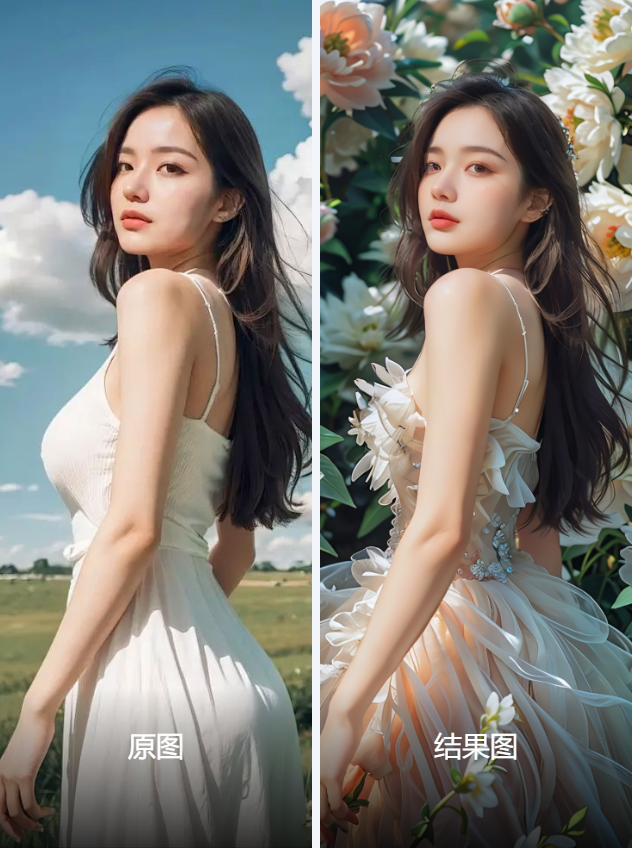Unlock the Power of Image Style Transfer: A Deep Dive into ControlNet and IPAdapter Workflow
Workflow Overview

The primary purpose of this workflow is to achieve image style transfer and redrawing using various techniques such as ControlNet, IPAdapter, and LoRA. It can generate images with specific styles based on input images and prompts while preserving the structure and content of the original image. The core of the workflow relies on multiple ControlNet models and IPAdapter to precisely control the style and content of the generated images.
Core Models
The workflow uses the following core models:
ControlNet: Used to control the structure and content of the generated images, supporting various preprocessors such as OpenPose, Depth, and Canny.
IPAdapter: Used for image style transfer, applying the style of a reference image to the generated image.
LoRA: Low-Rank Adaptation model, used to fine-tune the style and details of the generated images.
Stable Diffusion: The base image generation model, responsible for generating images based on prompts and conditions.
Component Explanation
Key components (Nodes) in the workflow include:
LoadImage: Loads input and reference images.
ControlNetLoader: Loads ControlNet models, supporting various preprocessors.
IPAdapterModelLoader: Loads IPAdapter models for style transfer.
CLIPVisionLoader: Loads CLIP vision models for image encoding.
BrushNetLoader: Loads BrushNet models for image redrawing.
ControlNetApplySD3: Applies ControlNet models to control the structure of generated images.
IPAdapterAdvanced: Applies IPAdapter models for style transfer.
KSampler (Efficient): An efficient sampler for generating images.
VAEDecode: Decodes latent space images into visible images.
PreviewImage: Previews the generated images.
Installation:
Components like ControlNet, IPAdapter, and LoRA need to be installed via ComfyUI Manager or GitHub. For example:
ControlNet plugin:
ComfyUI_ControlNetIPAdapter plugin:
ComfyUI_IPAdapter_plusLoRA plugin:
ComfyUI_Comfyroll_CustomNodes
Dependent Models:
ControlNet models (e.g.,
control_v11p_sd15_openpose,control_v11f1p_sd15_depth) need to be downloaded from Hugging Face or other model repositories.IPAdapter models (e.g.,
ip-adapter_sd15_plus) also need to be downloaded from the respective repositories.
Workflow Structure
The workflow can be divided into the following main parts:
Image Loading Group:
LoadImage: Loads input and reference images.
Input: Image file path (e.g.,
image.png).Output: Loaded image data for use by subsequent nodes.
ControlNet Control Group:
Multiple ControlNetLoader and ControlNetApplySD3 nodes, loading and applying different ControlNet models (e.g., OpenPose, Depth, Canny).
Input: Image data passed from the LoadImage node.
Output: Conditioned images processed by ControlNet.
Style Transfer Group:
IPAdapterModelLoader and IPAdapterAdvanced nodes, loading and applying IPAdapter models for style transfer.
Input: Reference images and generation models.
Output: Generated images with the style of the reference image.
Image Generation Group:
KSampler (Efficient) and VAEDecode nodes, generating and decoding images.
Input: Conditioned images processed by ControlNet and IPAdapter.
Output: Final generated images.
Prompt Processing Group:
CLIPTextEncode and SDXLPromptStyler nodes, processing prompts and generating conditioning vectors.
Input: Text prompts.
Output: Encoded conditioning vectors used for image generation.
Input and Output
Input:
Image file path (e.g.,
image.png).Text prompts (e.g.,
1girl, solo, brown_hair).Reference images (for style transfer).
Output:
Generated images, saved in PNG or JPG format.
Notes
Model Download: Ensure all used models (e.g., ControlNet, IPAdapter, LoRA) are correctly downloaded and placed in the ComfyUI model directory.
Performance Requirements: Running multiple models (e.g., ControlNet, IPAdapter) simultaneously may require significant GPU memory. A GPU with at least 8GB of VRAM is recommended.
Prompt Optimization: The quality of prompts directly affects the generated images. Detailed descriptions are recommended.
Compatibility: Ensure the ComfyUI version is compatible with the components in the workflow.